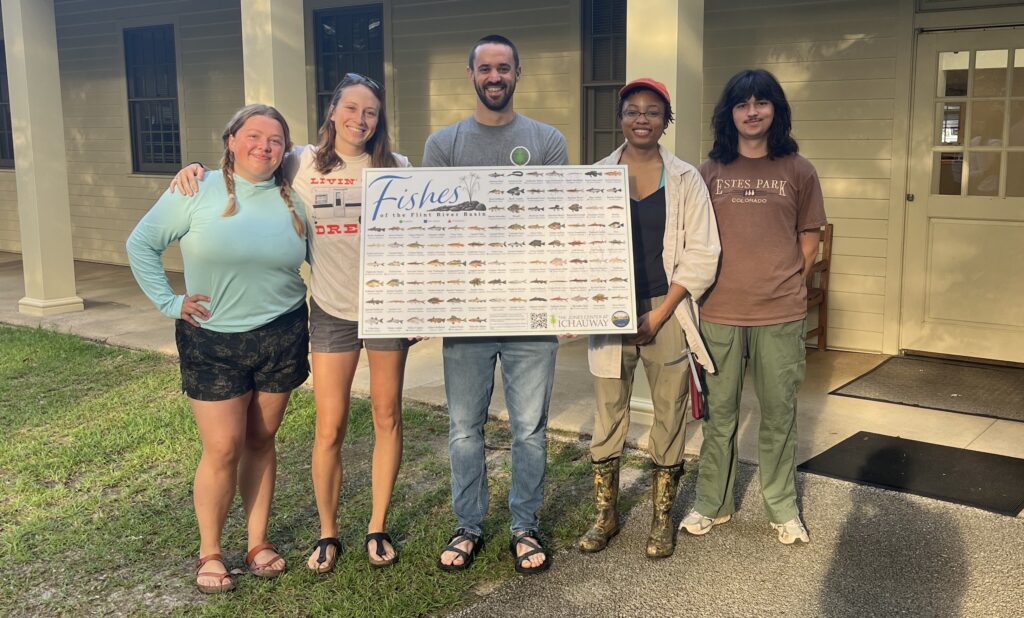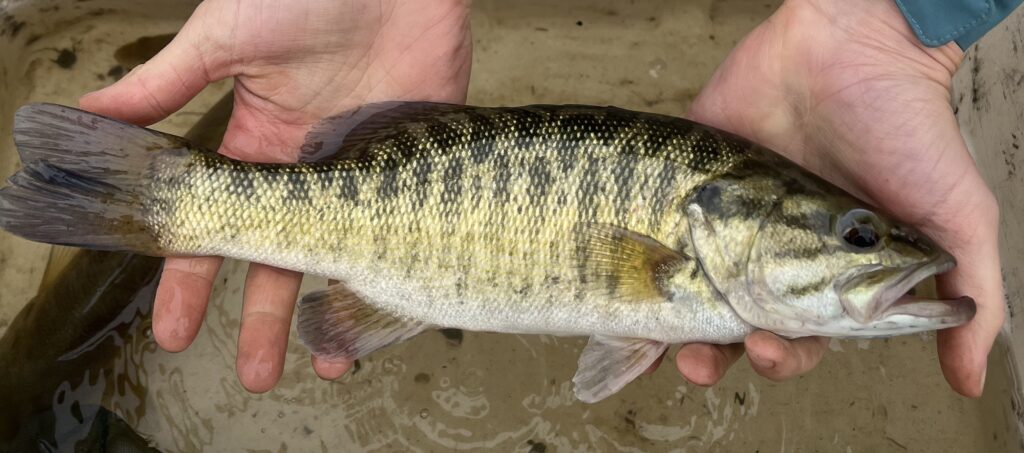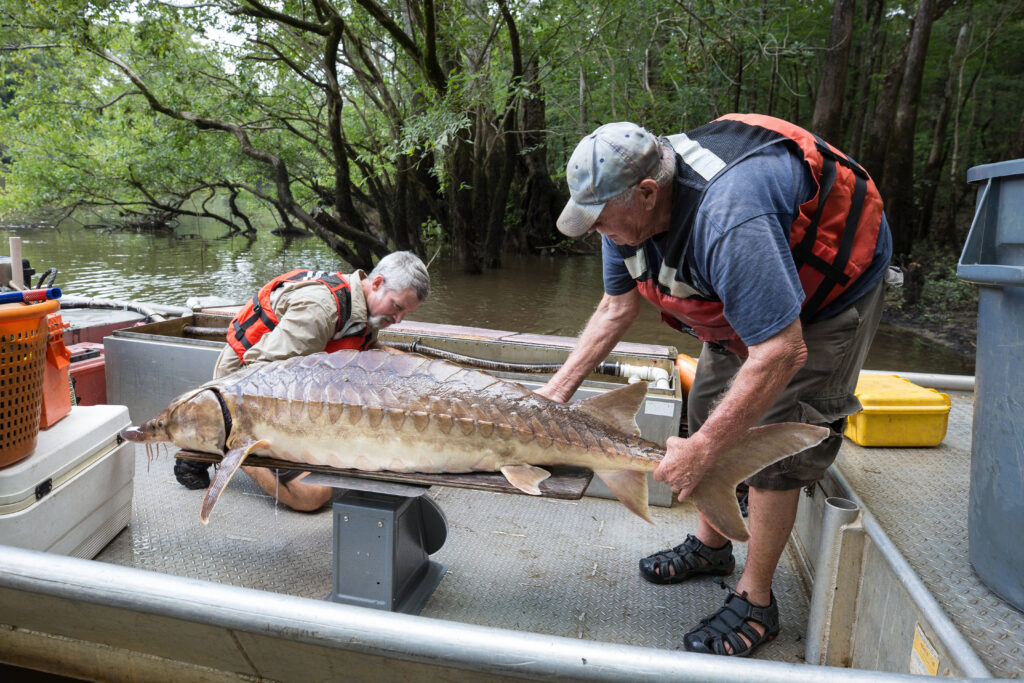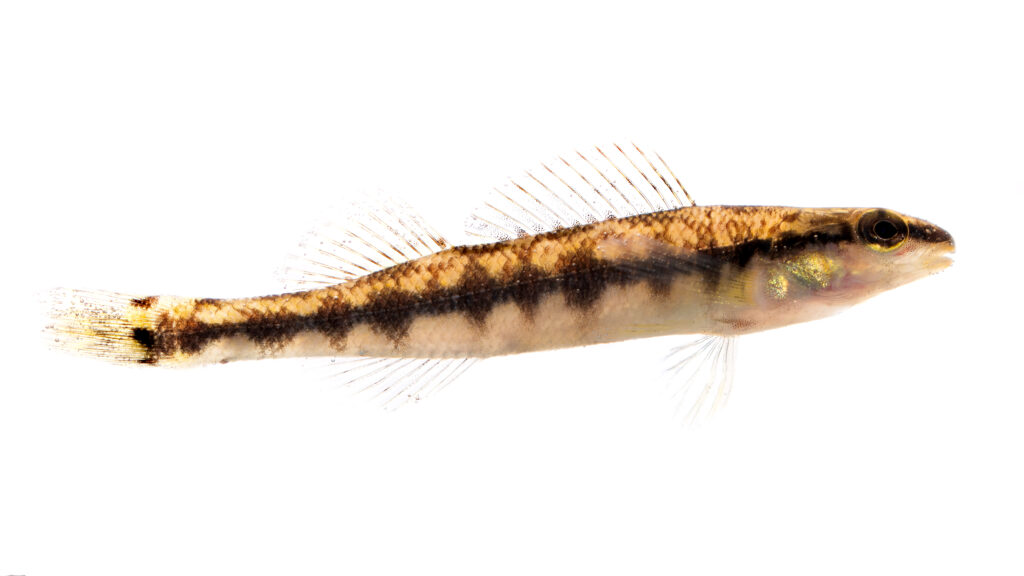Natural Resources Research & Management
Natural Resources Research & Management
The Jones Center at Ichauway is pleased to share the Fishes of the Flint River Basin poster
that highlights our watershed’s fish biodiversity!

From its headwaters near Hartsfield-Jackson Airport in Atlanta to its confluence with the Chattahoochee River to form the Apalachicola River at Lake Seminole, the Flint River is home to a whopping 92 species of fish. Of those 92 species, 15 are non-native/introduced, 7 are endemic (only occur in the Apalachicola-Chattahoochee-Flint [ACF] River Basin), and one is federally threatened.
The Flint River is one of the 14 major river basins in the state of Georgia. It flows 344 miles (220 miles of which are unimpeded by dams) through 27 counties. It’s one of only 40 rivers in the United States that flows freely for more 200 miles.

The Flint River is known for its world-class recreational fishing opportunities, particularly for the official Georgia State Riverine Sport Fish, the Shoal Bass (Micropterus cataractae). This species of black bass is popular among anglers due to its hard strikes, strong fights, and narrow geographic range. Shoal Bass are only found in the ACF River Basin with the Flint River hosting some of the healthiest and largest populations due to the conservation of certain habitats that Shoal Bass rely on. Shoal Bass often inhabit swift-moving, rocky shoal habitats and migrate through long river corridors to complete their life cycles. Unlike the closely related and more widespread Largemouth Bass, Shoal Bass rarely tolerate reservoir conditions and generally grow to smaller adult sizes.

Another notable fish of the Flint River, due to its absence, is the Gulf sturgeon (Acipenser oxyrinchus). This species has been federally threatened under the Endangered Species Act since 1991 due to overfishing, dam construction, and habitat degradation. Gulf sturgeon are anadromous, meaning they begin life in freshwater streams, migrate to the Gulf of Mexico, and eventually return to freshwater to spawn. The sturgeon’s habitat has decreased dramatically since the late 1800s to early 1900s from impoundments, including Woodruff Lock and Dam at Lake Seminole, which has hindered movement of Gulf Sturgeon into the Flint River.

The darters of the Flint are dazzling especially during the breeding season when the males’ colors are on full display. These small fish are called darters for their quick movements and are plentiful in all sizes of streams. One of the newest species of fish documented in the Flint is the Halloween Darter, Percina crypta, which requires swiftly flowing habitat over rocky shoals and is only found in the ACF Basin.
Stream connectivity allows fishes to reach important feeding and spawning habitats. Ensuring that fish passage is possible through common barriers such as road culverts and impoundments is vital to the conservation and resilience of our aquatic ecosystems. Fishes are important in the food web of the Flint River, both as predators and prey, and play an important role in transporting larvae for freshwater mussels. The Aquatic Sciences Lab at The Jones Center at Ichauway is pursuing stream connectivity research in the lower Flint River Basin as well as maintaining a long-term stream and river water monitoring program. Learn more about their work.
A limited number of full-sized (24” x 36”) copies of the poster are available.
Free Poster Pickup
A limited number of full-sized (24” x 36”) copies of the poster are available for pickup for free in Albany, GA beginning July 15, 2025. We suggest you call ahead to confirm poster availability and check office/store hours before traveling for pickup.
You can download a high-resolution digital version of the poster here.